Backcountry-Skifahren im Jahr [2025] dreht sich alles um leichte, tragbare Stiefel, die den Aufstieg erleichtern und die Abfahrt geschmeidiger machen. Egal, ob du durch den Pulverschnee in Colorado cruisest oder auf den Trails von Vermont gleitest, die richtigen Stiefel können dein Abenteuer machen oder brechen. Und wenn du auf kurze Skisysteme wie die Snowfeet* Walkski stehst, ist es ein echter Game-Changer, Stiefel zu finden, die nahtlos damit funktionieren.
Schnelle Empfehlungen:
- Snowfeet* Walkski-kompatible Schuhe: Erschwinglich, einfach und perfekt für kurze Ski.
- Atomic Backland Carbon: Hochleistungsfähig, aber besser für lange Ski geeignet.
- Scarpa F1 XT / 4-Quattro XT: Großartig für lange Touren, aber nicht so benutzerfreundlich für kurze Ski.
- Salomon Shift Alpha BOA 115: Präzise Passform, aber schwerer und komplexer.
- Tecnica Zero G Tour: Leicht, aber für lange Ski-Setups gebaut.
Warum Snowfeet* herausragt:
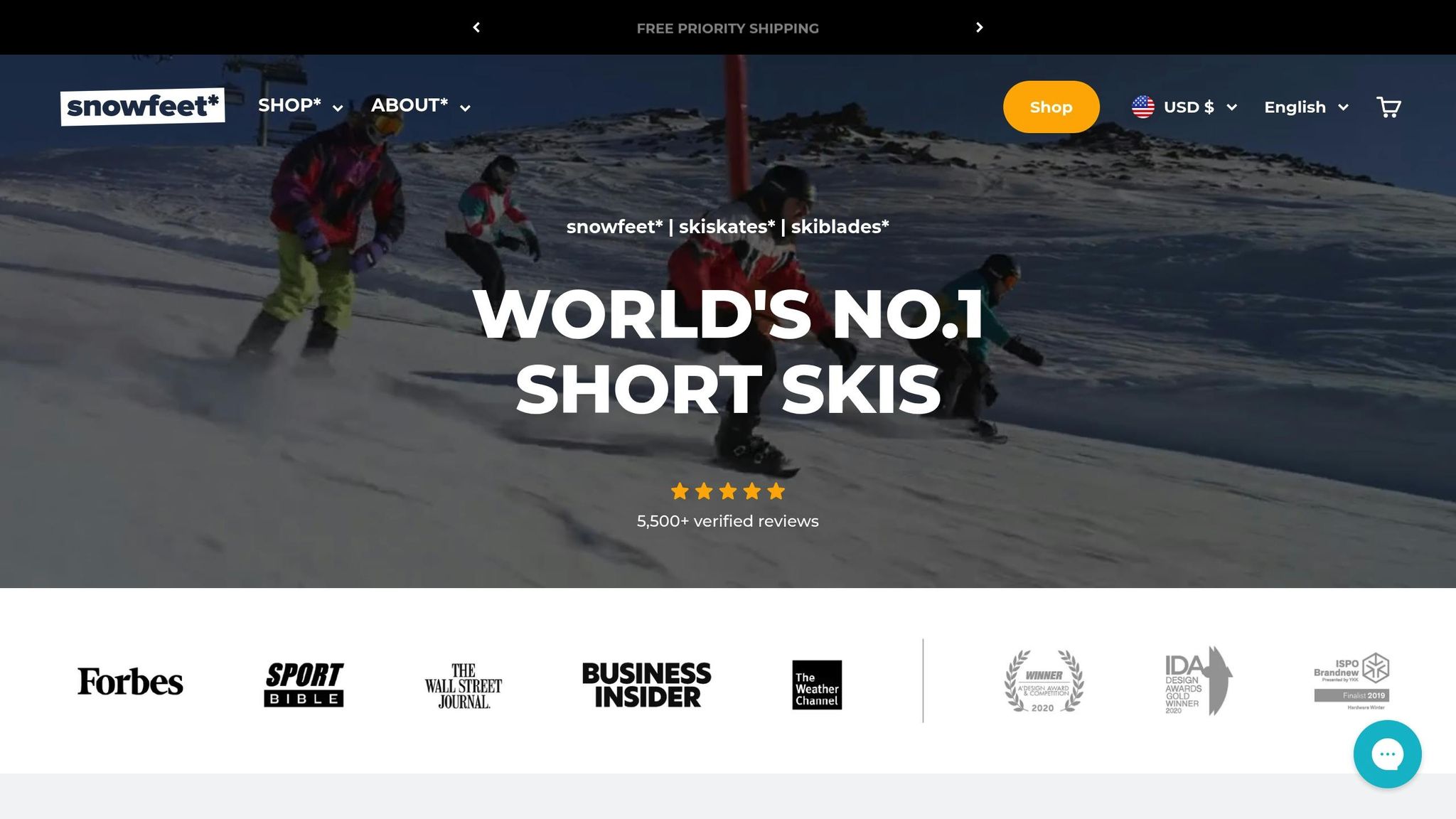
- Funktioniert perfekt mit 100 cm kurzen Skiern.
- Leicht und einfach zu bedienen.
- Preislich zwischen 150 und 300 US-Dollar, damit budgetfreundlich im Vergleich zu teureren Optionen (500–850 US-Dollar).
Wenn du etwas Einfaches, Tragbares und Effektives auf kurzen Skiern suchst, sind Snowfeet* Walkski-kompatible Schuhe eine solide Wahl. Lass uns ins Detail gehen.
Ausrüstungsbewertung | Scarpa F1 LT, Backcountry Touring Skischuhe
1. Snowfeet* Walkski-kompatible Schuhe
Snowfeet* bringt ein Walkski-kompatibles Schuhsystem auf den Markt, das mit verschiedenen Winterstiefeln funktioniert. Egal, ob du Wanderstiefel oder Snowboardschuhe trägst, du kannst dir den Aufwand sparen, spezielle Alpin-Schuhe zu kaufen. Dieses Setup ermöglicht es dir, das zu nutzen, was du bereits besitzt, und macht das Backcountry-Skifahren viel zugänglicher.
Obwohl es nicht viele Vergleichsdaten gibt, konzentriert sich Snowfeet* darauf, die Dinge einfach und benutzerfreundlich zu halten. Es ist eine solide Wahl für alle, die die Steifheit traditioneller Backcountry-Skischuhe zugunsten von etwas Flexiblerem hinter sich lassen wollen.
Das Snowfeet* Walkski-kompatible System verfolgt einen frischen Ansatz für Backcountry-Skiausrüstung und legt Wert auf Kompatibilität statt auf spezialisierte Ausrüstung. Im nächsten Abschnitt sehen wir, wie es sich im Vergleich zu anderen Top-Optionen schlägt und warum es in der Skiszene weiterhin für Aufsehen sorgt.
2. Atomic Backland Carbon
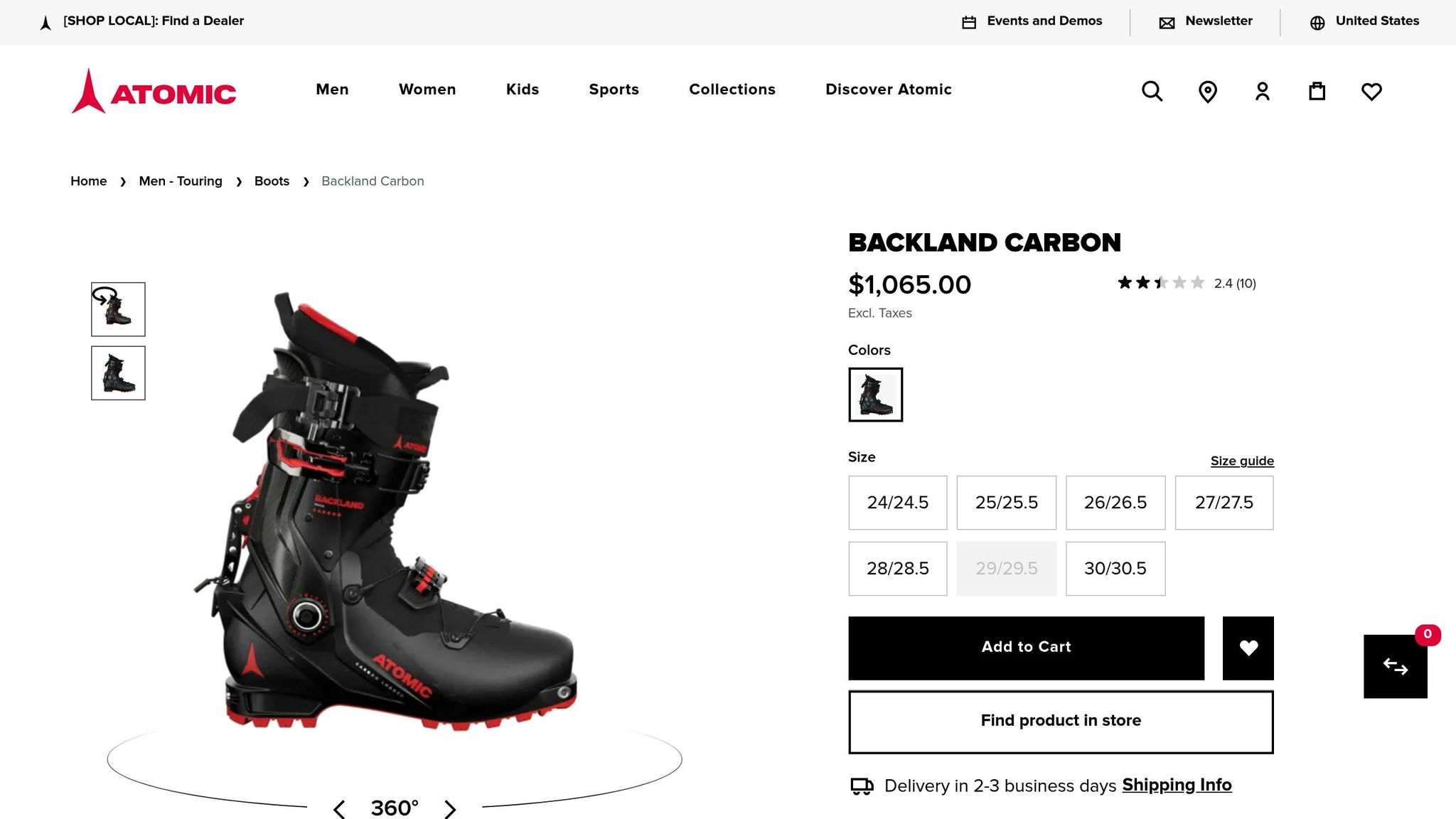
Der Atomic Backland Carbon ist für traditionelles alpines Tourengehen konzipiert und damit eine solide Wahl für Skifahrer, die Wert auf Leistung und Präzision legen. Hergestellt aus Carbonfaser bietet er beeindruckende Steifigkeit und Reaktionsfähigkeit, was am besten mit längeren Skiern und einem starren Tourensystem funktioniert. Das macht ihn ideal für technisches Tourengehen, hebt ihn aber vom leichten und minimalistischen Ansatz von Snowfeet* ab.
Mit einer hohen Flex-Bewertung liefert der Atomic Backland Carbon Präzision, die für Freizeitskifahrer vielleicht mehr ist, als sie brauchen. Er ist auf Skifahrer zugeschnitten, die Stabilität und Kontrolle über natürliche Beinbewegungen und schnelle Kantentransitionen schätzen – Eigenschaften, die für kürzere, wendigere Setups wie die Snowfeet* Walkski Backcountry Touring Skis essenziell sind.
Der Stiefel verfügt zwar über einen Walk-Modus zur Unterstützung beim Aufstieg, aber seine enge Passform kann schwierig sein. Anpassungen könnten notwendig sein, was Zeit und Kosten für das Setup hinzufügt. Während seine Carbon-Konstruktion Haltbarkeit garantiert und aggressive Skifahrer anspricht, kann sie für diejenigen, die Benutzerfreundlichkeit und Portabilität priorisieren, übertrieben wirken. Im Gegensatz dazu setzt Snowfeet* auf Einfachheit und Vielseitigkeit und bietet ein benutzerfreundlicheres Erlebnis.
Letztendlich ist der Atomic Backland Carbon für fortgeschrittene alpine Tourengeher gebaut, die stark auf traditionelle Setups setzen. Seine anspruchsvolle Natur unterstreicht jedoch den Reiz des leichten und anpassungsfähigen Designs von Snowfeet*, das perfekt für Skifahrer ist, die ein müheloseres Backcountry-Erlebnis suchen.
3. Scarpa F1 XT / 4-Quattro XT
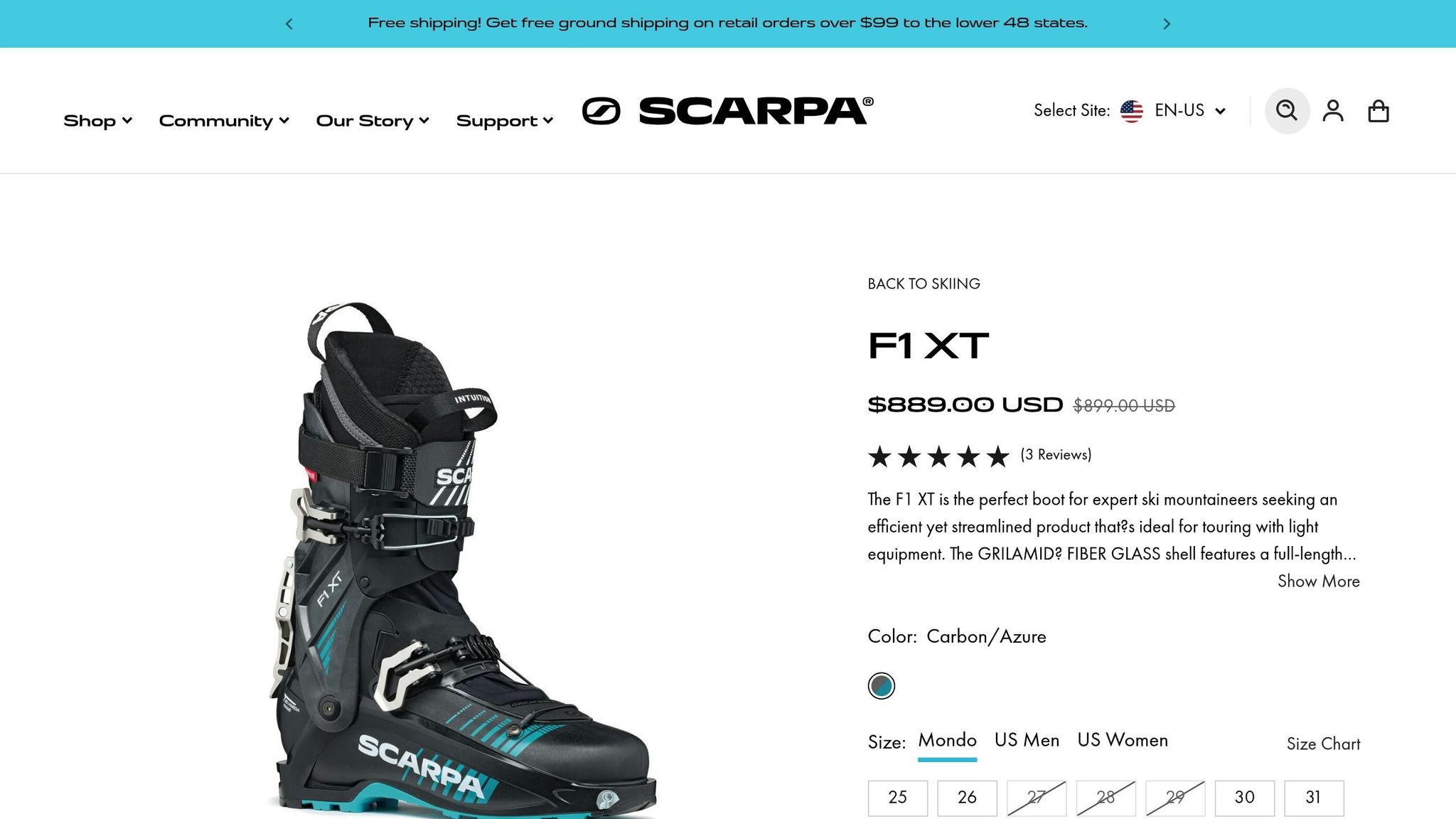
Scarpa bietet zwei herausragende Modelle: den F1 XT, der für leichtgewichtige Leistung beim Aufstieg gebaut ist, und den 4-Quattro XT, einen Hybridstiefel, der sowohl für Backcountry- als auch für Resort-Skifahren geeignet ist. Diese Stiefel zeigen technische Handwerkskunst, verfolgen aber einen anderen Weg als die Einfachheit und Portabilität, die Snowfeet* Fans schätzen.
Der F1 XT steht ganz im Zeichen von Leichtigkeit und Effizienz für lange Touren. Der 4-Quattro XT – mit einem Gewicht von 7 lbs 4,4 oz (Größe 28,5), einem Bewegungsradius von 61° und einer Leistenbreite von 100 mm – setzt dagegen auf eine traditionellere alpine Passform. Obwohl diese Features beeindruckend sind, entsprechen sie nicht ganz der unkomplizierten und vielseitigen Ausstrahlung, für die Snowfeet* Produkte bekannt sind.
Wenn es um die Kompatibilität mit Snowfeet* Walkski geht, machen diese Details den Unterschied. Der leichtere Aufbau und der größere Bewegungsradius des F1 XT passen gut zur Portabilität von 100 cm Skiern. Seine fortschrittlichen technischen Features können jedoch für diejenigen, die einfach ein leichtes, spaßiges und benutzerfreundliches Erlebnis suchen – das Markenzeichen von Snowfeet* Ausrüstung – etwas übertrieben wirken.
Der 4-Quattro XT, zum Preis von 869 $ (mit Rabatten bei einigen Händlern etwa 650 $), verfügt über eine GripWalk-Sohle, die variable Schneebedingungen professionell meistert. Snowfeet* verfolgt jedoch einen anderen Ansatz und bietet ähnliche Vielseitigkeit mit einem schlanken Design, das Portabilität und Benutzerfreundlichkeit priorisiert. Dieser Kontrast zeigt, warum Snowfeet* Produkte bei denen Anklang finden, die Einfachheit und Praktikabilität suchen.
Kurz gesagt, während Scarpa’s Schuhe erstklassige alpine Tourentechnik zeigen, verdeutlicht ihre Komplexität, warum das minimalistische, unkomplizierte Design von Snowfeet* bei modernen Wintersportlern weiterhin punktet.
4. Salomon Shift Alpha BOA 115
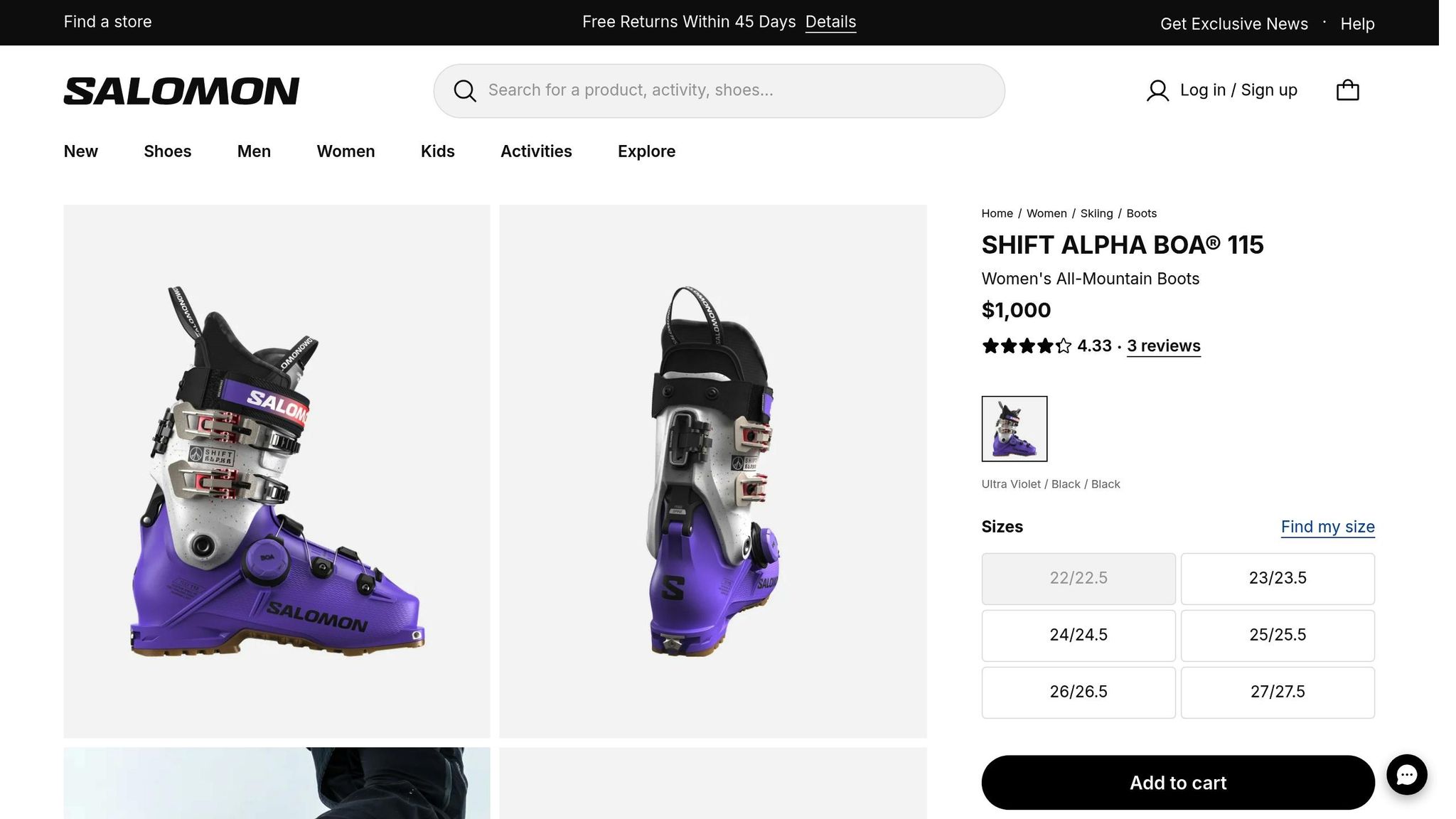
Der Salomon Shift Alpha BOA 115 geht beim Design einen anderen Weg. Er verfügt über das BOA® Fit System mit einem Einzelschraubenmechanismus für präzise Einstellungen. Während dieses System Genauigkeit bietet, kann es im Vergleich zur einfachen Plug-and-Play-Lösung von Snowfeet* etwas kompliziert wirken. Zum Beispiel funktioniert das Design von Snowfeet* mühelos mit Short Ski-Systemen wie dem 100 cm Walkski und macht die Nutzung kinderleicht.
Unter schwierigen Bedingungen kann das BOA-System etwas aufwändiger wirken, besonders für diejenigen, die schnelle und intuitive Ausrüstung bevorzugen. Snowfeet* sticht hier durch seinen Fokus auf einfache, minimalistische Ausrüstung hervor, die modernen Backcountry-Abenteurern Benutzerfreundlichkeit bietet. Dieser Unterschied unterstreicht Snowfeet*’s Engagement, die Dinge einfach und zugänglich zu halten.
sbb-itb-17ade95
5. Tecnica Zero G Tour
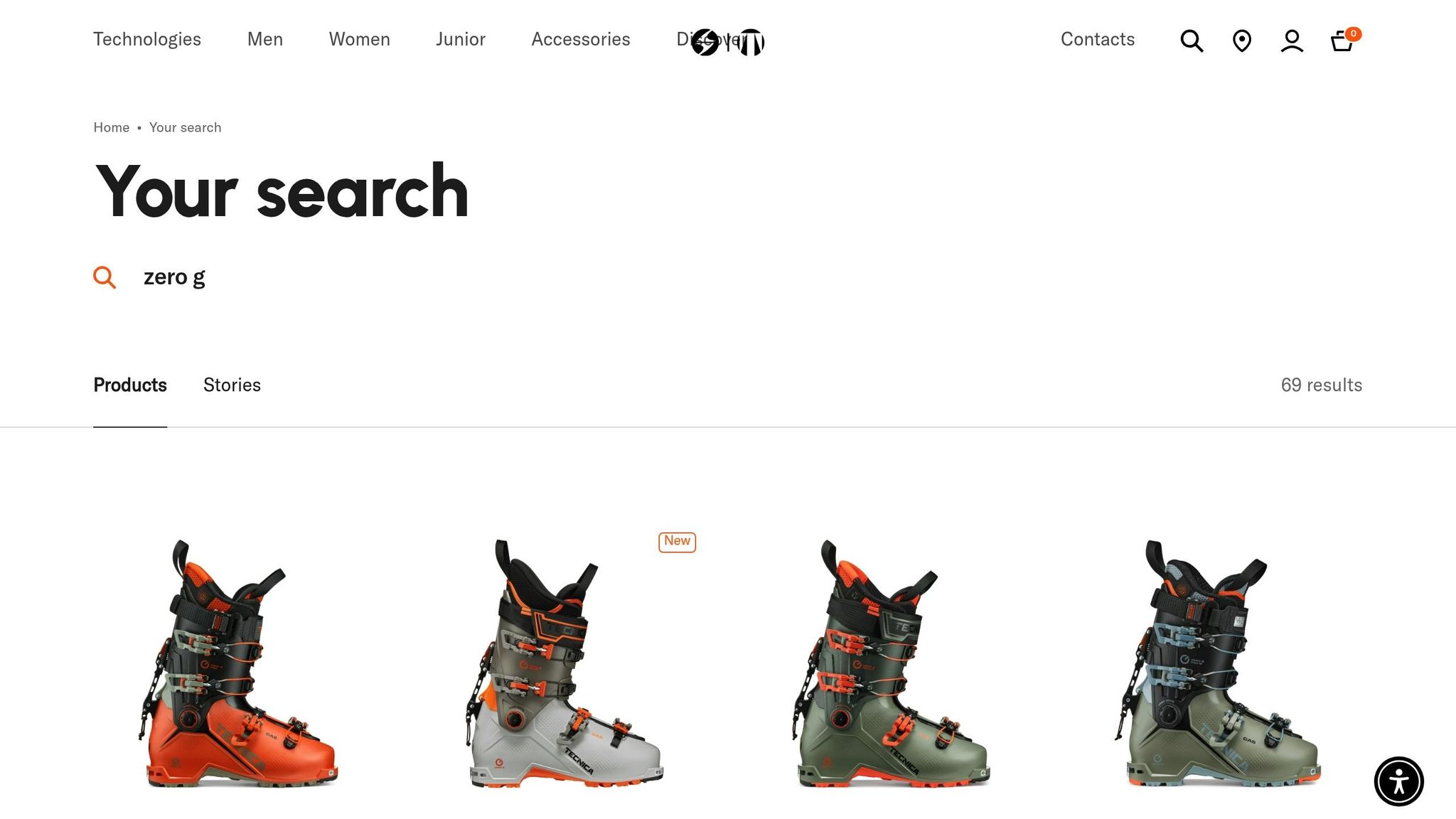
Der Tecnica Zero G Tour ist bekannt für sein leichtes Design, das das Aufsteigen einfacher und effizienter macht. Hergestellt in Italien, verfügt dieser Schuh über eine karbonverstärkte Manschette und eine speziell entwickelte Schale, um zusätzliches Gewicht zu reduzieren und das Fellen zu erleichtern. Dieser Fokus auf Gewichtsreduzierung geht jedoch zulasten der Haltbarkeit im Vergleich zu traditionelleren Designs.
Der Gehmodus des Zero G Tour ist auf klassische Langlaufski-Setups abgestimmt, was ihn im Vergleich zu modernen Alternativen wie dem 100 cm Walkski von Snowfeet* etwas weniger anpassungsfähig macht. Snowfeet* legt Wert auf Portabilität und Benutzerfreundlichkeit und bietet ein integrierteres Erlebnis.
Für Komfort bietet der Zero G Tour eine thermoformbare Innenschuh und verstellbare Schnallen, die eine individuelle Passform ermöglichen. Allerdings kann die Passform bei längeren Touren eng wirken, was nicht für jeden geeignet ist. Sein höherer Preis spiegelt seine Attraktivität für eine bestimmte Gruppe von Traditionalisten wider – ganz anders als Snowfeet*, das sich darauf konzentriert, vielseitige und zugängliche Optionen für heutige Backcountry-Enthusiasten zu schaffen.
Während der Zero G Tour eine Nische erfahrener Skifahrer anspricht, zeichnet sich Snowfeet* durch einen moderneren und inklusiveren Ansatz für das Backcountry-Skifahren aus.
Vor- und Nachteile
Beim Vergleich von Schuhmodellen ist es wichtig, Faktoren wie Gewicht, Haltbarkeit, Komfort, Kompatibilität mit Short Skis und Preis zu betrachten. Die folgende Tabelle gibt Ihnen einen schnellen Überblick darüber, wie verschiedene Modelle abschneiden.
| Schuhmodell | Gewicht | Haltbarkeit | Komfort | Kompatibilität mit kurzen Skiern | Preisspanne |
|---|---|---|---|---|---|
| Snowfeet* Walkski-Compatible Boots | Ausgezeichnet – Ultraleicht und einfach zu tragen | Sehr gut – Für den regelmäßigen Gebrauch mit kurzen Skiern gemacht | Ausgezeichnet – Bietet erstklassigen Komfort für lange Touren | Perfekt – Speziell für 100 cm Walkski-Kompatibilität entwickelt | $150–$300 |
| Atomic Backland Carbon | Sehr gut – Carbon-Bauweise hält es leicht | Gut – Leichte Materialien können die Haltbarkeit einschränken | Gut – Bequem, kann aber bei längeren Touren steif wirken | Schlecht – Geeignet für traditionelle lange Skier, nicht für kurze Skier | $600–$800 |
| Scarpa F1 XT / 4-Quattro XT | Gut – Etwas schwerer, behält aber ein ausgewogenes Gefühl | Ausgezeichnet – Hochwertige italienische Handwerkskunst garantiert Langlebigkeit | Sehr gut – Bewährter Komfort für ausgedehnte Touren im Backcountry | Akzeptabel – Funktioniert mit kurzen Skiern, ist aber nicht speziell optimiert | $500–$700 |
| Salomon Shift Alpha BOA 115 | Ausreichend – Schwerer durch robuste Bauweise und BOA-System | Sehr gut – Für aggressives Skifahren konzipiert | Gut – BOA-System passt die Passform an, bringt aber etwas Volumen mit sich | Schlecht – Am besten für Skigebiete und lange Ski geeignet, nicht für Kurzski | 550–750 $ |
| Tecnica Zero G Tour | Ausgezeichnet – Eine der leichtesten verfügbaren Optionen | Ausreichend – Haltbarkeit wird zugunsten des Gewichts reduziert | Gut – Thermoformbare Innenschuhe sorgen für Komfort, aber die enge Passform kann einschränkend sein | Schlecht – Gehmodus auf traditionelle Setups abgestimmt, nicht auf Kurzski | 650–850 $ |
Dieser Vergleich macht eines klar: Traditionelle Skischuhmarken konzentrieren sich auf Langski-Setups und verlangen oft Premiumpreise. Andererseits stellt Snowfeet* Tragbarkeit und Kurzski-Kompatibilität in den Vordergrund und bietet eine Lösung, die den Geldbeutel schont und die Füße entlastet.
Mit Preisen von 150–300 $ bieten Snowfeet*-Stiefel eine viel erschwinglichere Option im Vergleich zu den 500–850 $ teuren traditionellen Modellen. Außerdem reduziert ihr leichtes Design die Belastung Ihres Systems, was sie zu einer langlebigen und komfortablen Wahl für Backcountry-Abenteuer macht. Im Gegensatz zu sperrigeren, auf lange Ski ausgerichteten Designs sind Snowfeet*-Stiefel darauf ausgelegt, Bewegungsfreiheit und eine natürliche Passform zu bieten – perfekt für alle, die das Kurzski-Touring kompromisslos genießen möchten.
Fazit
Snowfeet* Walkski-kompatible Stiefel sind ein Game-Changer für Skifahrer, die leichte Ausrüstung bevorzugen. Während traditionelle Marken wie Atomic, Scarpa, Salomon und Tecnica sich auf Stiefel für lange Ski konzentrieren, verfolgt Snowfeet* einen anderen Ansatz. Ihre Stiefel sind speziell dafür entwickelt, nahtlos mit Kurzski-Systemen zu funktionieren.
Entwickelt, um perfekt mit einem 100 cm Walkski zu harmonieren, finden diese Stiefel die richtige Balance zwischen Tragbarkeit und Leistung. Sie sind leicht, einfach zu tragen und bieten eine natürliche Passform – ideal für Backcountry-Entdecker, die Ausrüstung suchen, die mit ihren Abenteuern Schritt halten kann.
FAQs
Wie schneiden Snowfeet* Walkski-kompatible Stiefel im Vergleich zu traditionellen Skischuhen in Bezug auf Leistung und Benutzerfreundlichkeit ab?
Snowfeet* Walkski-kompatible Stiefel sind ein echter Game-Changer für Wintersportliebhaber. Sie sind leicht, einfach zu bedienen und bieten eine frische Sicht darauf, was Skischuhe sein können. Im Gegensatz zu den sperrigen, starren Skischuhen, die spezielle Bindungen benötigen, funktionieren Snowfeet-Stiefel nahtlos mit Ihrer normalen Winterbekleidung – denken Sie an Snowboard-Stiefel. Das bedeutet, Sie können die schwere Ausrüstung weglassen und trotzdem die Pisten genießen, egal ob Sie zu einer Tour im Backcountry aufbrechen oder einen entspannten Tag im Schnee verbringen.
Was sie wirklich auszeichnet, ist ihre Portabilität und die unkomplizierte Handhabung. Traditionelle Skischuhe können sich wie eine lästige Pflicht anfühlen, besonders wenn du kürzere Ski wie Snowfeet* Walkskis benutzt. Aber mit Snowfeet-Boots hast du eine schlanke, unkomplizierte Option, die perfekt für alle ist, die Flexibilität und spontane Abenteuer lieben. Und das Beste? Du musst weder auf Komfort noch auf Leistung verzichten, um es einfach zu halten.
Sind Snowfeet* Walkski-kompatible Boots eine gute Wahl für Anfänger und erfahrene Backcountry-Skifahrer?
Snowfeet* Walkski-kompatible Boots sind eine fantastische Option für alle, egal ob du gerade erst ins Backcountry-Skifahren einsteigst oder schon wie ein Profi die Trails meisterst. Diese Boots sind so konzipiert, dass sie sich mühelos mit deinen normalen Winterschuhen kombinieren lassen, was sie für Anfänger super zugänglich macht und gleichzeitig die Leistung liefert, die erfahrene Skifahrer brauchen.
Was sie wirklich auszeichnet, ist ihr leichter Aufbau, das benutzerfreundliche Design und die Portabilität. Sie sind bequem genug für lange Touren und funktional genug, um verschiedene Gelände zu meistern. Egal, ob du auf Anfängerhängen bleibst oder deine Fähigkeiten auf anspruchsvolleren Trails testest – diese Boots sind bereit, deine Backcountry-Abenteuer auf ein neues Level zu heben.
Was macht Snowfeet* Walkski-kompatible Boots zur besten Wahl für kurze Ski wie den 100 cm Walkski?
Snowfeet* Walkski-kompatible Boots: Ein Game-Changer für kurze Ski
Snowfeet* Walkski-kompatible Boots sind dafür gemacht, deine Abenteuer mit kurzen Ski wie dem 100 cm Walkski zum Kinderspiel zu machen. Dank ihres leichten Aufbaus fühlst du dich weniger erschöpft, was mehr Spaß und weniger Anstrengung bei Backcountry-Touren bedeutet.
Was diese Boots auszeichnet, ist ihre Vielseitigkeit. Du kannst mühelos zwischen Gehen und Skifahren wechseln, ohne den Aufwand sperriger, traditioneller Skischuhe. Kein klobiges Equipment, das dich bremst – nur fließende Übergänge, die den Spaß am Laufen halten.
Gefertigt aus glasfaserverstärkten Materialien, sind diese Boots auf Langlebigkeit ausgelegt. Sie sind robust genug, um alle Schneearten zu meistern und halten dich dabei stabil und sicher auf den Beinen. Außerdem legt Snowfeet* Wert auf Portabilität und Erschwinglichkeit, was diese Boots zur klugen Wahl für alle macht, die Komfort ohne Leistungseinbußen schätzen.
Egal, ob du ein erfahrener Profi bist oder zum ersten Mal kurze Ski ausprobierst, diese Boots bieten eine einfach zu bedienende, moderne Alternative zu den üblichen Skiausrüstungen. Sie sind perfekt für alle, die bereit sind, eine einfachere und spaßigere Art zu genießen, den Schnee zu erobern.














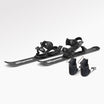






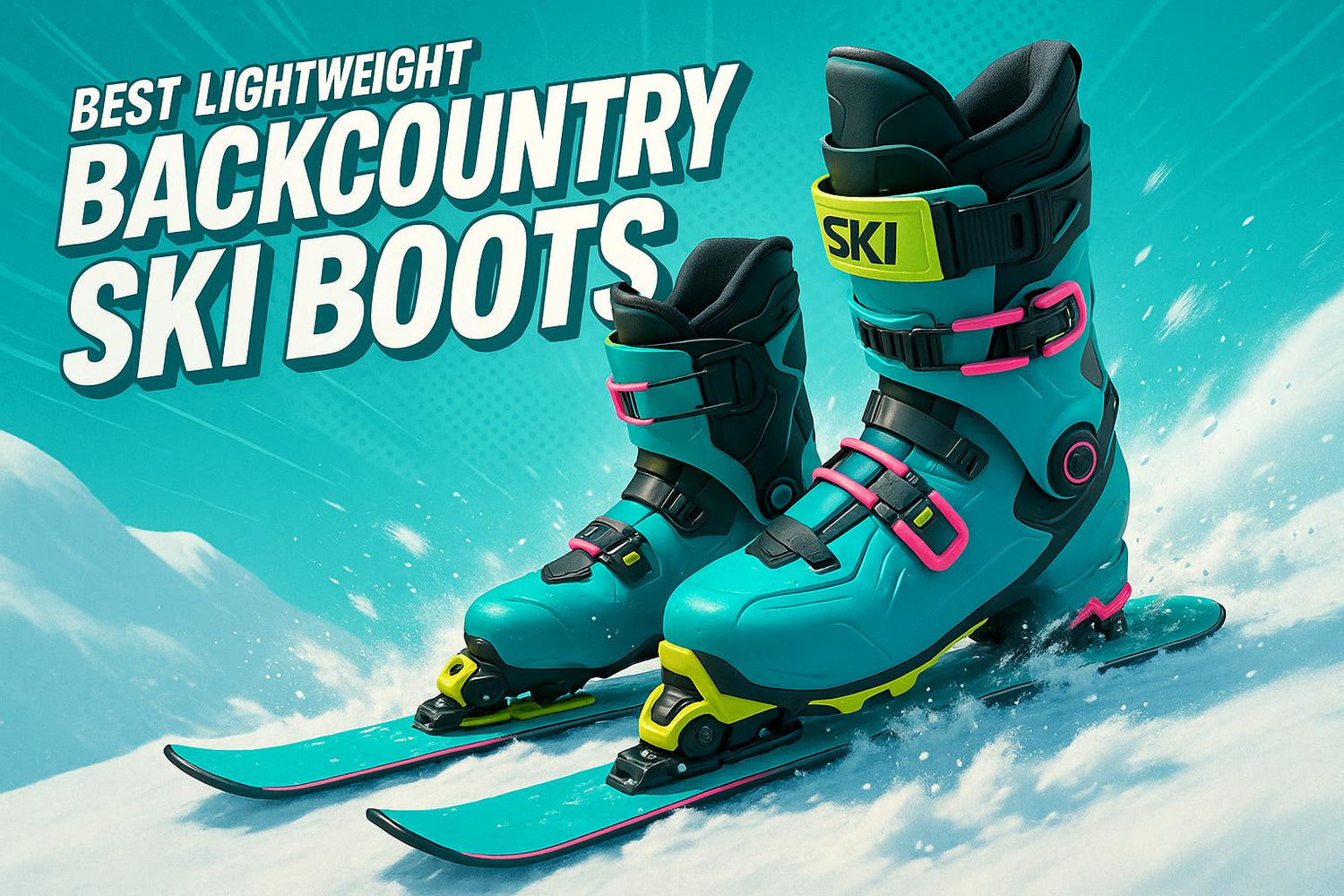
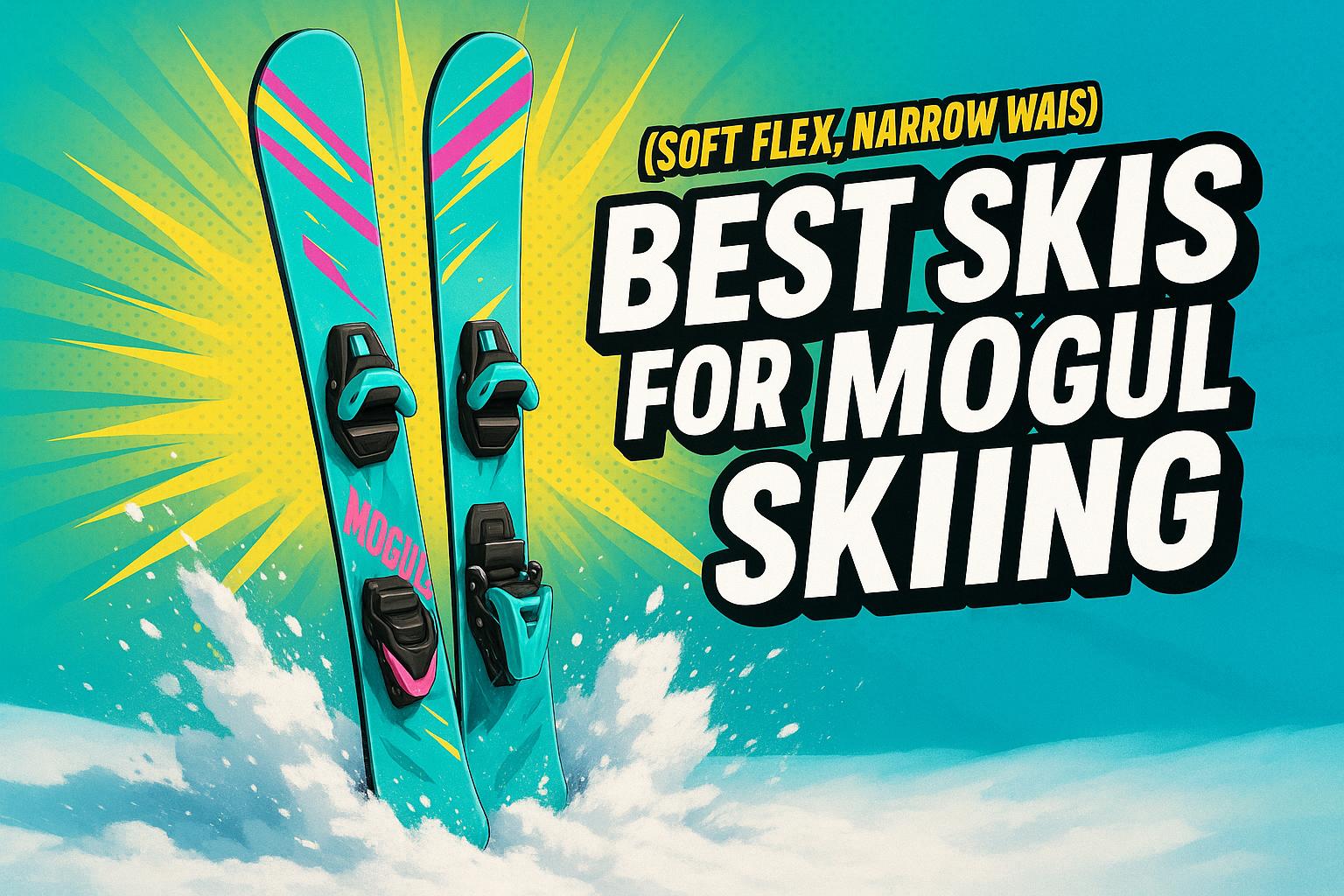
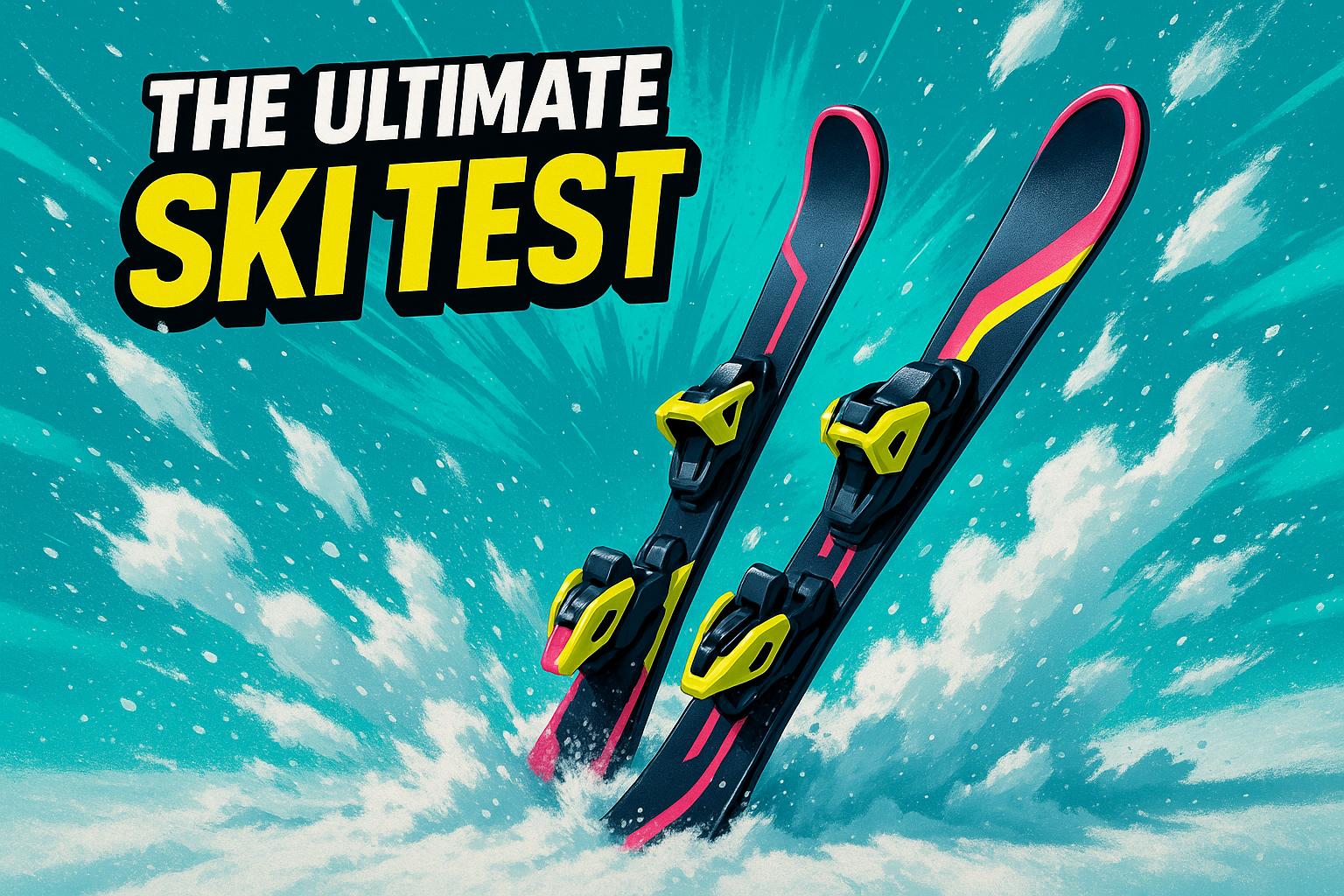










Hinterlassen Sie einen Kommentar
Diese Website ist durch hCaptcha geschützt und es gelten die allgemeinen Geschäftsbedingungen und Datenschutzbestimmungen von hCaptcha.